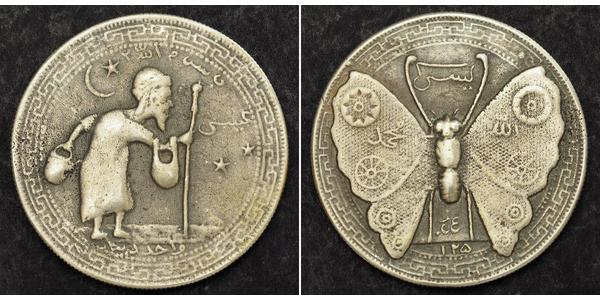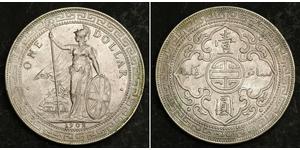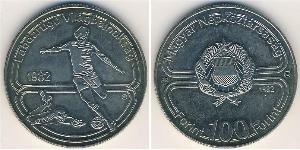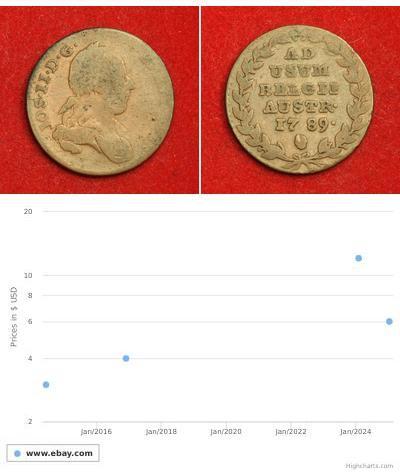(Vendue pour $10.0)
1920s, South East Asia. Cast "One Dinar" Fantasy Dollar Token. Hajji Coinage!
Mint Year: ca. 1920s-1950s Condition: Probably cast (sand cast?), with a cleaner edge (as usual), small test-scratches, otherwise about XF for the issue! Denomination: Dollar / One Dinar - Hajji Token Coinage - This type of fantasy coins were privately produced and sold as commemorative "good luck" pieces for Islamic pilgrims in South Asia (Malaysia and Indonesia) who made their way to Mecca. Material: silvery alloy (uncertain purity) Weight: 23.12gm Diameter: 38mm
Obverse: Old manright. Crescent, star and and inscriptions in fields and below. Decorative border (similiar to the British Trade Dollar coinage!) around.
Reverse: Butterfly with various inscriptions on it and above and below. Decorative border (similiar to the British Trade Dollar coinage!) around.
Hajji (الحجّي) (sometimes spelled Hadji, Haji, Alhaji, Al hage, Al hag or El-Hajj) is a title which is originally given to a Muslim person who has successfully completed the Hajj to Mecca. It is also often used to refer to an elder, since it can take time to accumulate the wealth to fund the travel (particularly before the advent of mass air travel), and in many Muslim societies as an honorific title for a respected man. The title is placed before a person's name; for example Joshua Omo becomes Hajji Joshua Omo.
"Hadži" is also used in Christian Orthodox religion for people who go on pilgrimage to the grave of Christ in Jerusalem. It can then be added to the pilgrim's first name, e.g., Hadži-Prodan.
Hajji is derived from the Arabic ḥājj, which is the active participle of the verb ḥajja ("to make the pilgrimage"). The alternative form ḥajjī is derived from the name of the Hajj with the adjectival suffix -ī, and this was the form adopted by non-Arabic languages.
Only 1$ shipping for each additional coin purchased!























